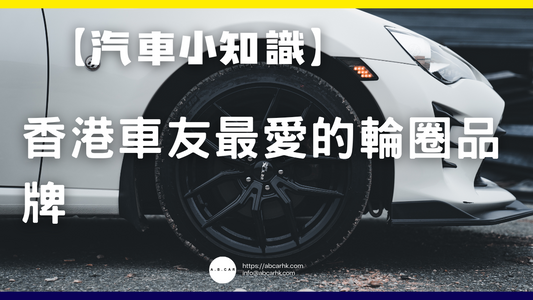[Pet Tips] 5 Reasons Why Your Dog Sheds Excessively

5 reasons why your dog is shedding too much hair🐕🍂
Owners must understand! Understand dog hair loss and fundamentally improve it
Every Hong Konger has a friend who says, "My dog sheds all the time! It's a real shame!" While some shedding is normal, sudden heavy shedding or even balding should alert you to the underlying cause. We've compiled insights from local doctors, animal behaviorists, and dog owners to break down the five most common causes of dog hair loss, helping you identify and address them one by one.
1. Seasonal and weather changes 🍃🌞
It's not surprising to see a big drop in sales during the changing seasons
Dogs actively shed their undercoat or old fur to replace it with a new coat as the temperature and humidity fluctuate throughout the seasons. This is especially noticeable at the turn of spring and summer, and autumn and winter. For periods ranging from a few weeks to a month or two, you'll often see flying hairs everywhere.
Coping methods
Comb the hair frequently, especially for breeds with multi-layer hair (Husky, Shiba Inu, etc.); during the changing seasons, you can use a depilatory brush to comb the hair regularly, which can not only reduce the accumulation of hair in the home, but also improve the health of the hair.
2. Unbalanced nutrition/dietary problems🥕🥩
Lack of specific nutrients is most likely to cause hair loss
Healthy hair requires protein, Omega-3, vitamin A/E, etc. If the staple food is monotonous for a long time and lacks nutritious meals, the hair will fall out easily and the hair color will lose its luster.
Coping methods
When buying food, carefully read the nutrition label. You can swap out the food appropriately, add fresh food, or supplement with high-quality fish oil. However, remember to avoid human food, especially if it's too salty.
3. Skin problems/parasitic infections🐾🦠
Skin diseases such as eczema and fleas, hair loss and scratching
Hong Kong's humid environment is prone to bacterial and fungal infections. External parasites (mites and fleas) are also a contributing factor to hair loss. Dogs will scratch and even lick the itchy areas, causing baldness or redness.
Coping methods
Check the dog's skin regularly and consult a veterinarian if any abnormalities are present. Do not try any medications yourself. Deworm the entire house and pay attention to the hygiene of dog supplies and bedding.
4. High stress or emotional distress 😰🌀
Environmental or psychological stress - dogs will shed their fur
Moving, getting a new pet, lifestyle changes, or being left alone for too long can all cause stress and even anxiety in dogs. This can lead to excessive licking, patchy hair loss, and even tangled hair.
Coping methods
Spend more time playing and exercising with your child, and ensure a regular routine. For new homes or new family members, give them plenty of rewards and comfort to help them gradually adapt.
5. Improper cleaning and care/excessive bathing 💦🚿
Shampoo and using the wrong bathing method can cause problems
Bathing the dog too frequently (e.g. more than 1-2 times a week) or using human shampoo or conditioner can easily damage the dog's sebum and pH value, causing the skin to become dry and causing excessive hair loss.
Coping methods
Generally, washing your pet every 3-4 weeks is sufficient, using a product specifically formulated for pets. Combing your pet's coat can also help reduce the accumulation of dead hair. Don't neglect cleaning its ears and nails regularly.
Editor's summary
Excessive hair loss can actually be a health warning sign. Don't rely solely on sweeping and shaving to address it. Maintain a balanced diet, get adequate exercise, maintain a dry environment, and comb your dog's coat frequently. Seek veterinary attention if you notice any obvious abnormalities. Communicate with your pet frequently, observe carefully, and address any issues promptly. This way, your dog can continue to enjoy a soft, beautiful coat, a healthy, energetic life, and a happy life with you!
When a dog sheds excessively, daily care and management are crucial to effectively reduce shedding and maintain a healthier coat. The following are some scientifically effective care recommendations that are easy for Hong Kong families to implement:
1. Comb your dog regularly
-
Use a pet-specific comb every day or every other day, especially during the change of seasons (2-3 times a week for short-haired dogs, and daily for long-haired dogs), to help remove dead hair and dandruff.
-
While combing the hair, you can also check the skin condition and detect red spots, itchy areas or parasites early.
2. Correct bathing frequency and supplies
-
It is generally recommended to take a bath every 3-4 weeks. In summer, you can take a bath more frequently to avoid excessive cleaning that will damage skin oil.
-
Only use pet shampoo, never human shampoo. Blow dry thoroughly after washing.
-
After bathing, you can use hair care spray to increase moisturizing and prevent static electricity.
3. Eat a balanced and nutritious diet
-
Choose a complete dog food that contains high-quality protein (such as chicken, fish), Omega-3 fatty acids (fish oil), vitamin A/E, etc.
-
Dry food can be occasionally paired with a small amount of fresh food such as eggs and salmon (cooked), but remember not to add too much.
-
Drink enough water and ensure fresh and clean water every day.
4. Control the humidity of your home environment
-
The humidity in Hong Kong can cause itchy skin and hair loss. You can use a dehumidifier to keep the room dry and ventilated.
-
Clean and disinfect beds, quilts, and toys regularly to reduce the growth of bacteria and mold.
5. Regular pest control and health checks
-
Follow the veterinarian's advice to do internal and external deworming to prevent fleas and mites from causing hair loss or damage.
-
Perform a physical/skin check at least once a year. See a veterinarian if any abnormalities are found, such as hair loss, red urine, or a strange odor.
6. Reduce stress and increase interaction
-
Maintain a regular daily routine, play with your child more often, take more walks, and reduce stress from the environment.
-
Try educational games, pull-string toys, etc. Distracting your dog's attention can also reduce "anxious licking."
7. Avoid excessive trimming and clothing
-
The fur of cats and dogs can be trimmed shorter in the summer, but avoid shaving them completely to keep the fur layer protected from temperature and sunlight.
-
Do not wear clothes for a long time or use inappropriate decorations to prevent the skin from breathing.
A word of caution : Pet owners need to be patient. Each dog's physique, breed, and age will affect the amount of hair loss. As long as you perform daily maintenance attentively and observe your dog's health for any abnormalities, you will definitely see a significant improvement in the quality of the hair within a few months. If you notice severe hair loss or it persists, be sure to consult a veterinarian and don't try any home remedies on your own!



